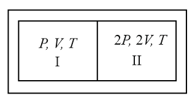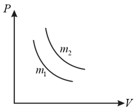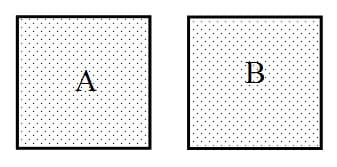Kinetic Theory of Gases
Kinetic Theory of Gases: Overview
This topic covers concepts, such as, Avogadro's Number, Molar Mass, Molecules Obey Laws of Motion & Gas Laws from Kinetic Theory etc.
Important Questions on Kinetic Theory of Gases
If volume occupied by molecules is negligible, then what will be the pressure exerted by one mole of at is .
What is the average kinetic energy of molecules of an ideal gas leaking freely through an orifice of a container which has molecules at pressure in volume ?
A sample of an ideal gas occupies a volume at pressure and absolute temperature . The mass of each molecule is , then the density of the gas is
A gas diffuse times as fast as hydrogen. Its molecular weight is
Two spherical vessels of equal volume, are connected by a narrow tube. The apparatus contains an ideal gas at one atmosphere and Now if one vessel is immersed in a bath of constant temperature and the other in a bath of constant temperature Then the common pressure will be

Gases obey vander-wall's equation at:
A partition divides a container having insulated walls into two compartments and . The same gas fills the two compartments whose initial parameters are given. The partition is a conducting wall which can move freely without friction. Which of the following statements is/are correct, with reference to the final equilibrium position?

A sample of an ideal gas occupies a volume at pressure and absolute temperature . The mass of each molecule is , then the density of the gas is
When the temperature of a gas filled in a closed vessel is increased by , its pressure increases by percent. The initial temperature of gas was
A vessel has of oxygen at pressure and temperature . A small hole is made in it so that oxygen leaks out. How much oxygen leaks out if the final pressure is and temperature is ?
Two different isotherms representing the relationship between pressure and volume at a given temperature of the same ideal gas are shown for masses and of the gas respectively in the figure given, then

A graph between pressure (along -axis) and absolute temperature, (along -axis) for equal moles of two gases has been drawn. Given that volume of second gas is more than volume of first gas. Which of the following statements is correct?
The perfect gas equation for 4 g of hydrogen gas is
Insulin contains sulphur. The minimum molecular weight of insulin is:
Two containers A & B contain ideal gases helium and oxygen respectively. Volume of both containers are equal and pressure is also equal. Container A has twice the number of molecules than container B then if & represent the rms speed of gases in containers A & B respectively, then -

The equation of state of a gas is given by, , where, and are constants. The isotherms can be represented by , where, and depend only on temperature and
Assertion: According to kinetic theory of gases, all the collision between molecule-molecule, and between molecule-walls of container are perfectly elastic, so speed of each molecule in an isolated gaseous system remains constant.
Reason: Distribution of speed among the molecules of gas does not change with time for the above system.
Assertion: The potential energy of ideal gas is zero.
Reason: At low pressure or high temperature the molecules are far apart and molecular interactions are negligible.
P-V diagram of a diatomic gas is a straight line passing through origin. The molar heat capacity of the gas in the process will be -
